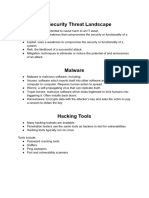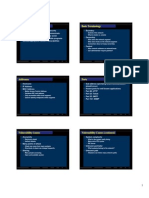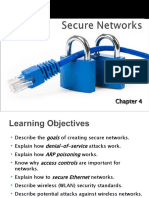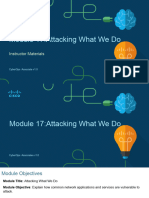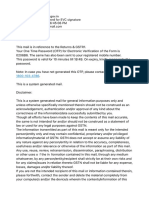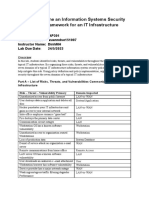0% found this document useful (0 votes)
19 views61 pagesCH 04
The document discusses different types of network vulnerabilities and attacks. It covers topics like cyberwarfare, sniffing attacks, denial of service attacks, spoofing, and wireless attacks. It provides details on various network protocols and how they can be exploited by attackers.
Uploaded by
more.des.omCopyright
© © All Rights Reserved
We take content rights seriously. If you suspect this is your content, claim it here.
Available Formats
Download as PDF, TXT or read online on Scribd
0% found this document useful (0 votes)
19 views61 pagesCH 04
The document discusses different types of network vulnerabilities and attacks. It covers topics like cyberwarfare, sniffing attacks, denial of service attacks, spoofing, and wireless attacks. It provides details on various network protocols and how they can be exploited by attackers.
Uploaded by
more.des.omCopyright
© © All Rights Reserved
We take content rights seriously. If you suspect this is your content, claim it here.
Available Formats
Download as PDF, TXT or read online on Scribd
/ 61









